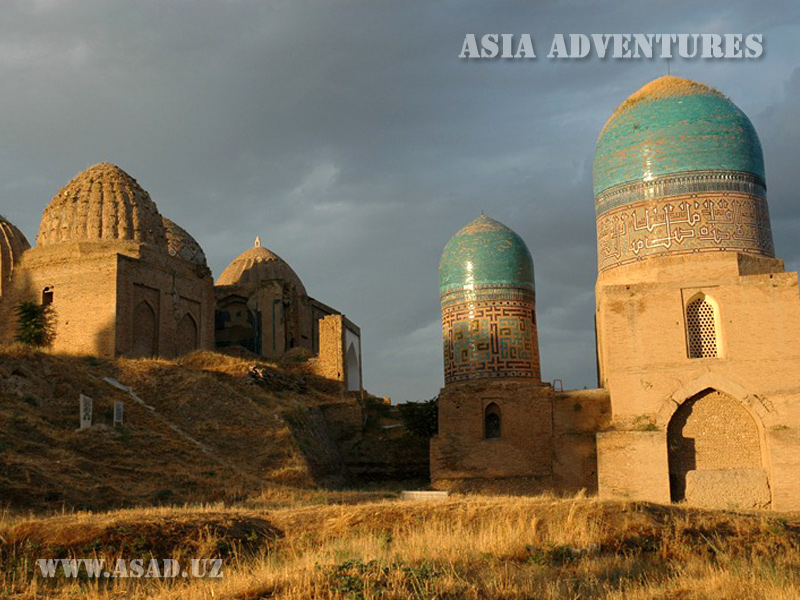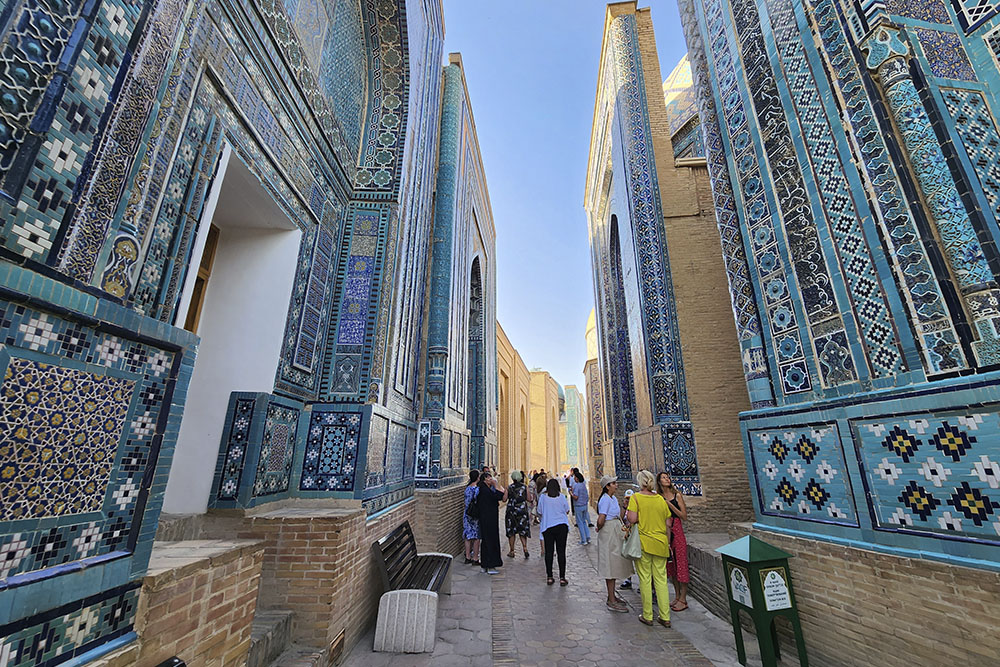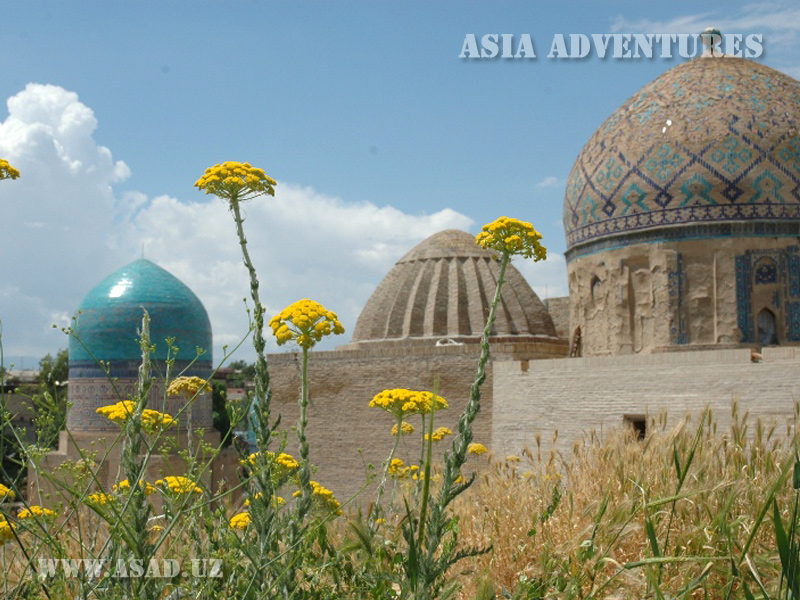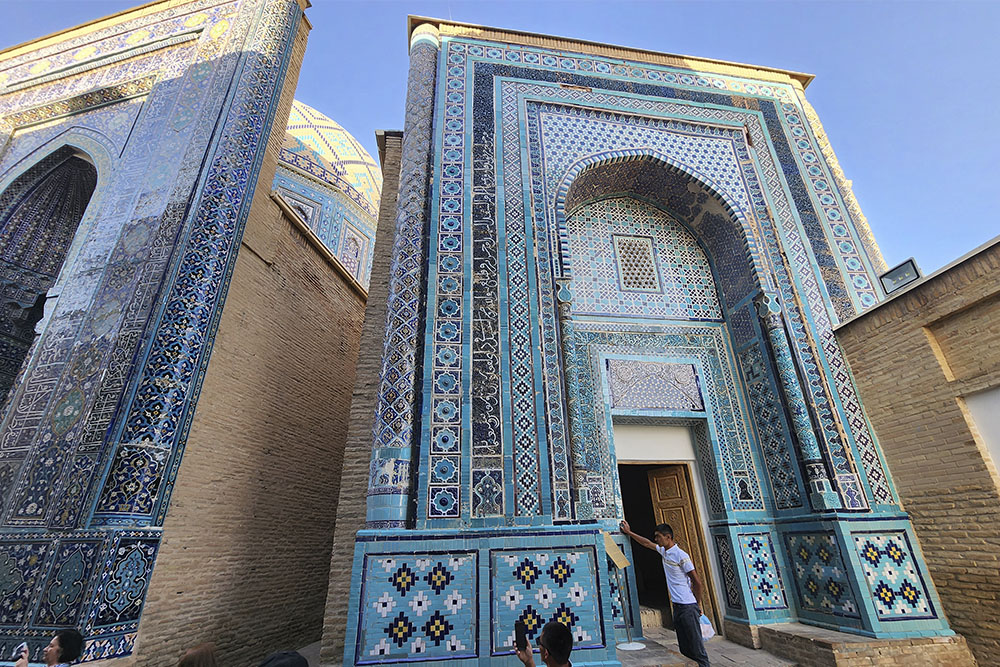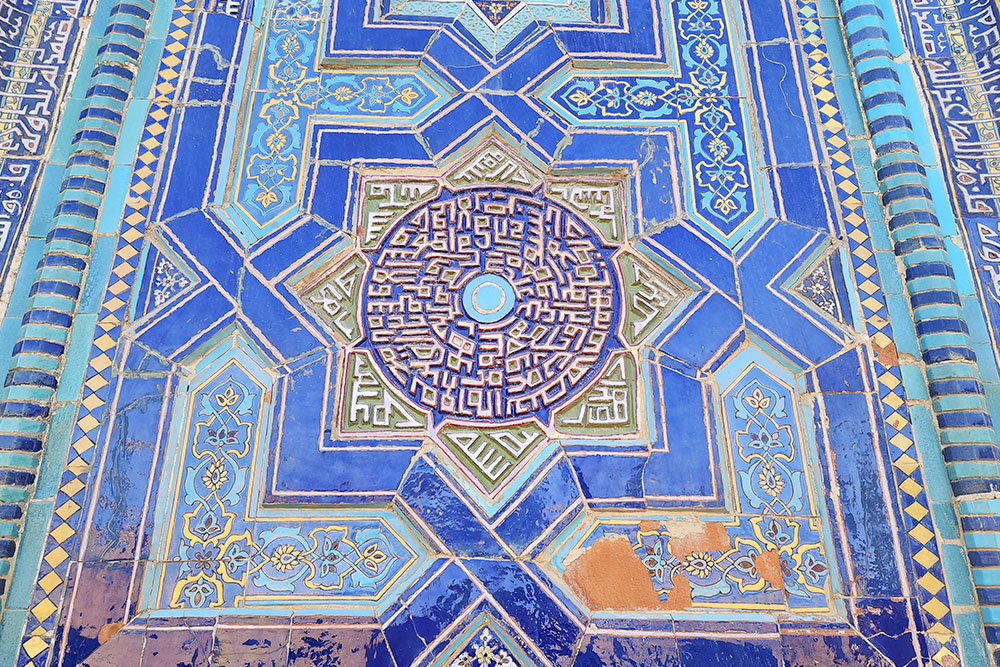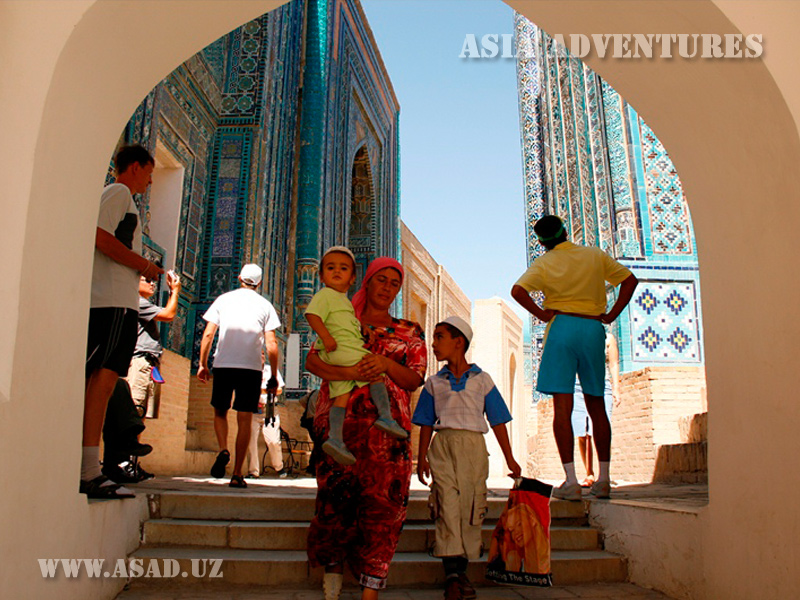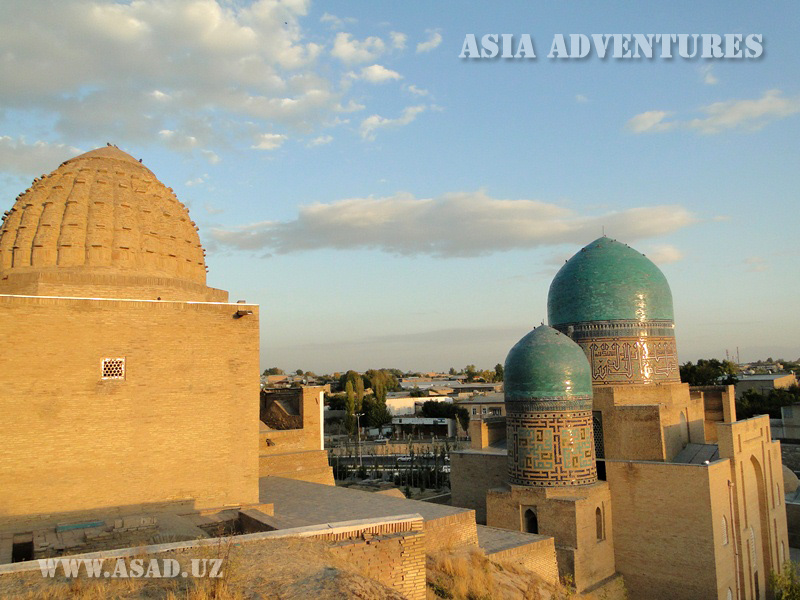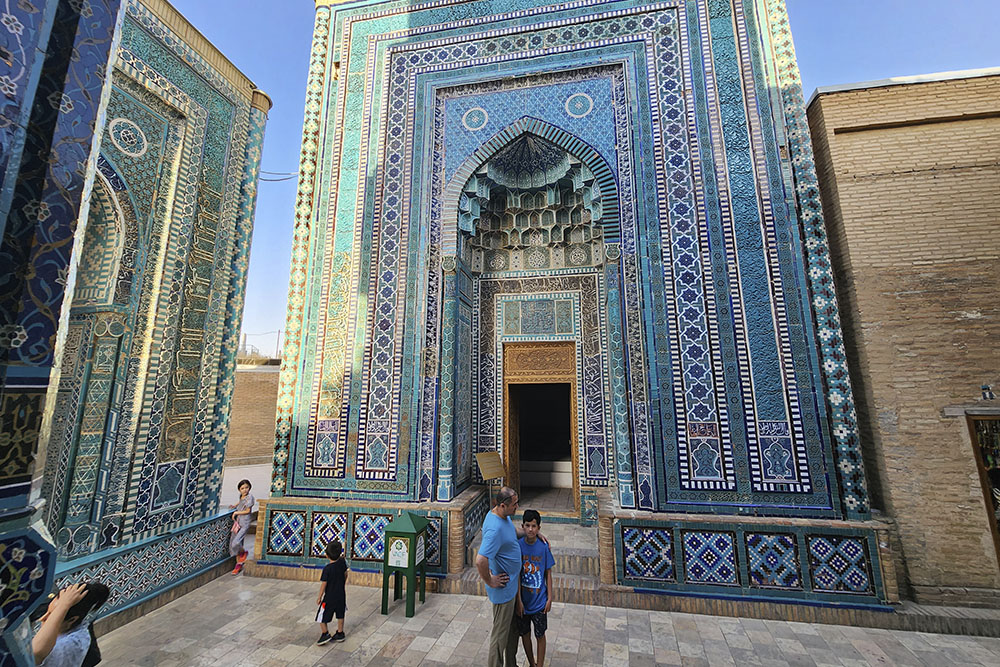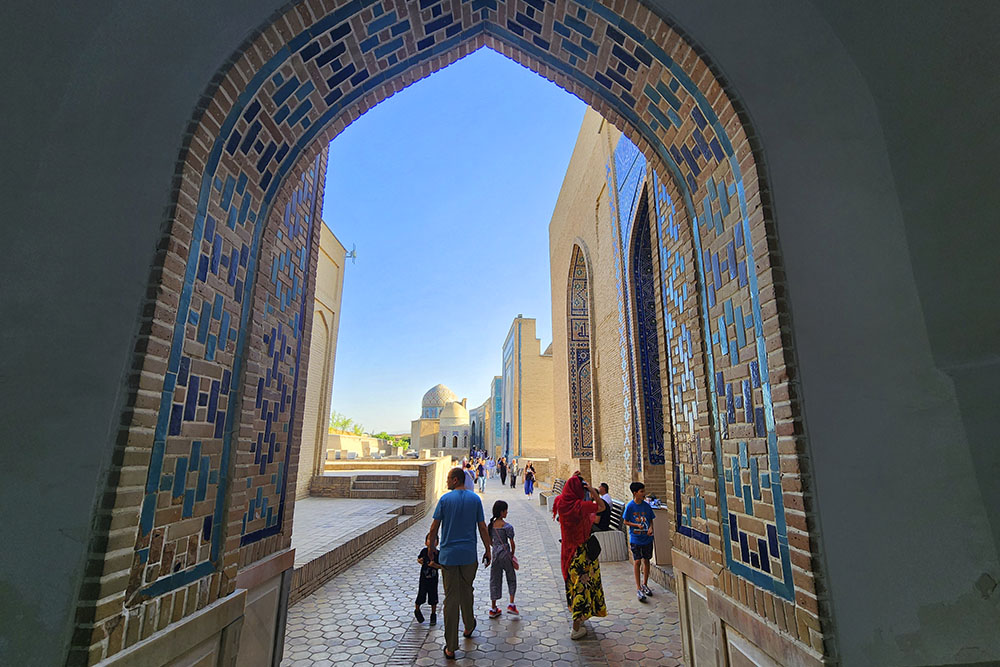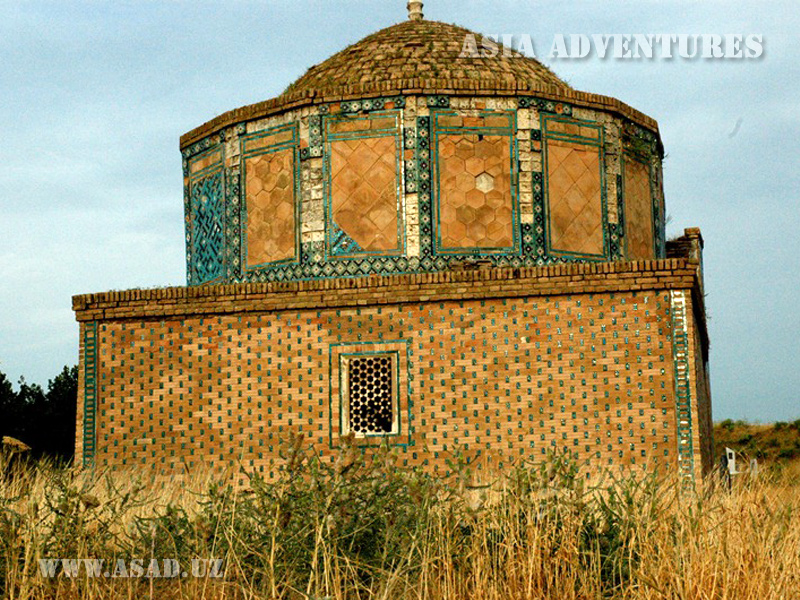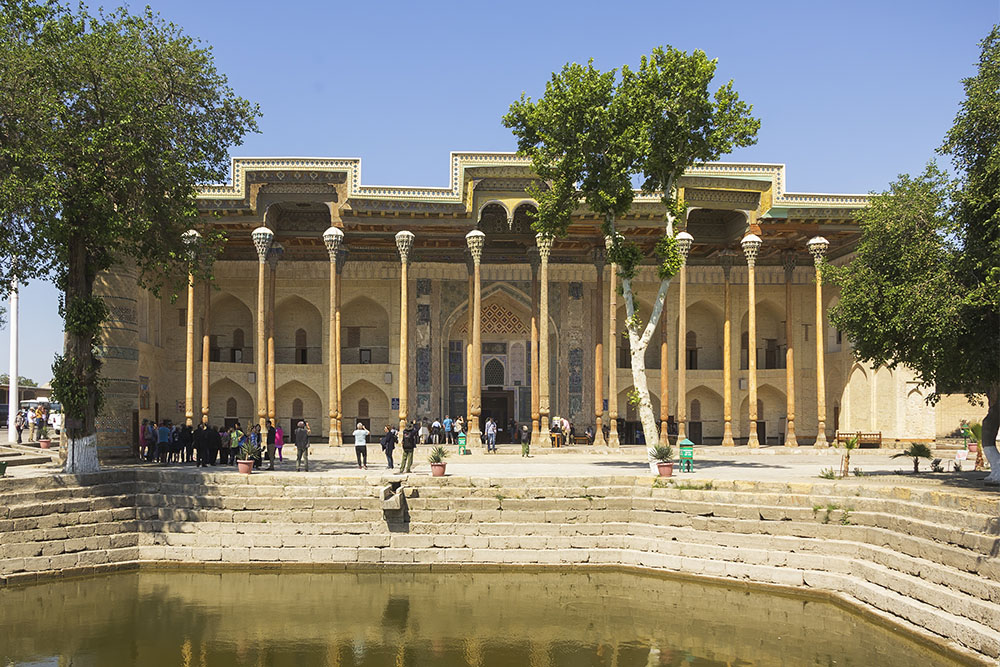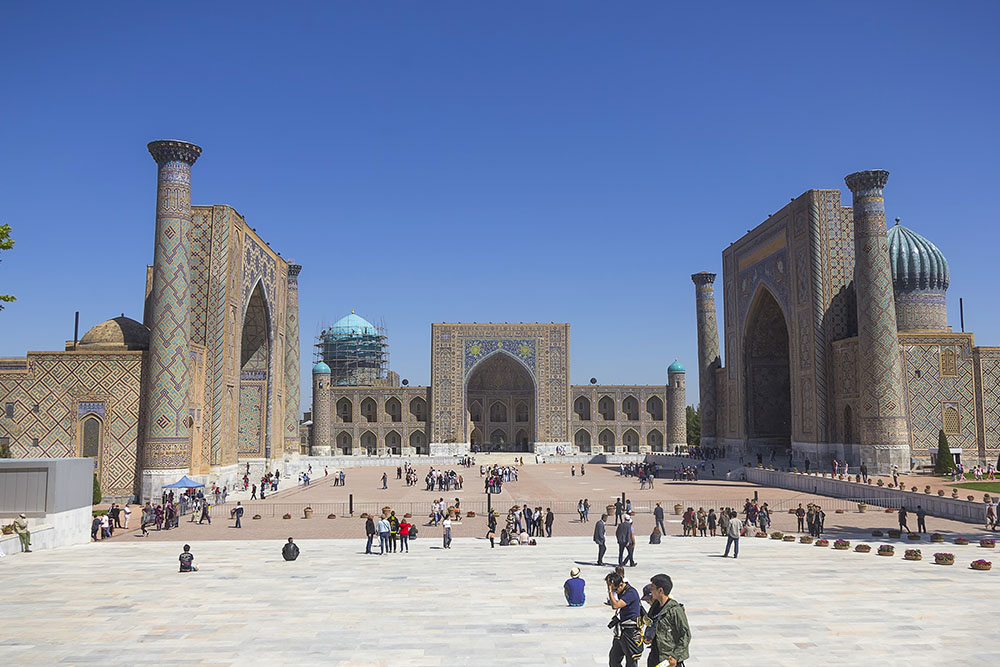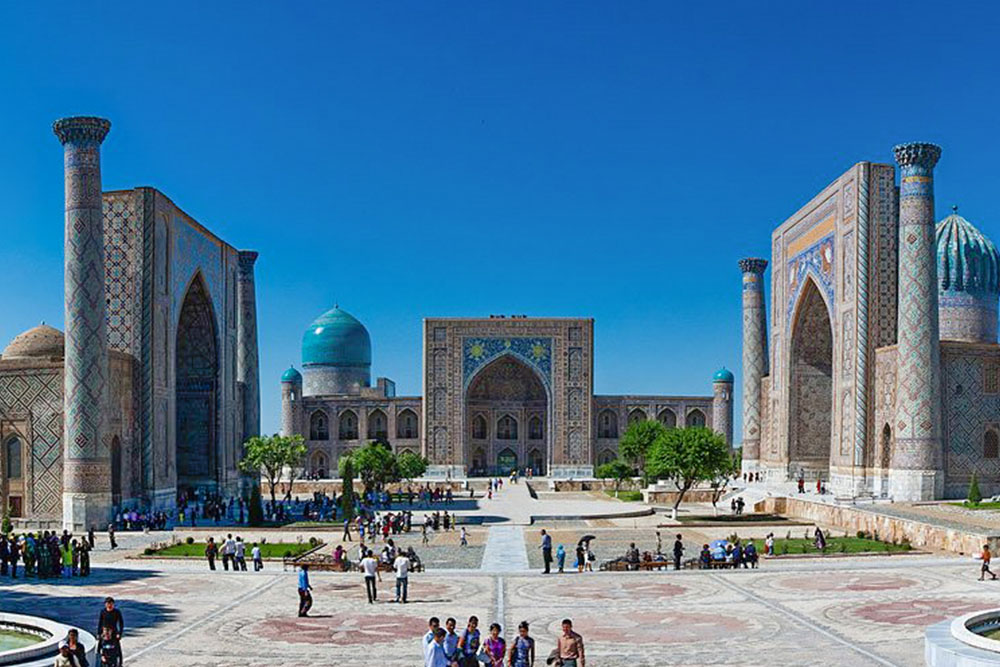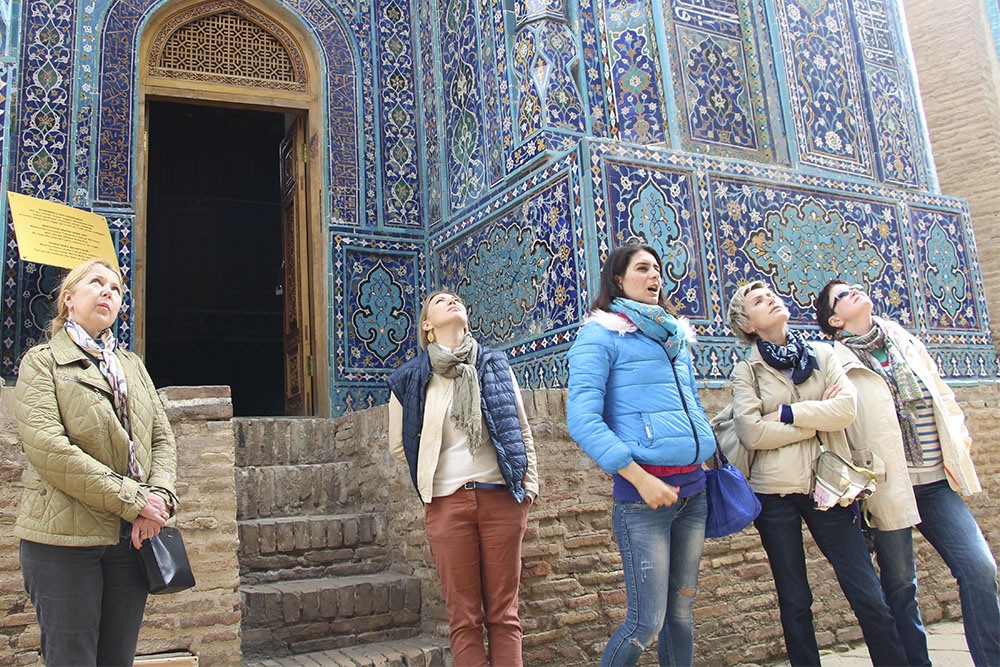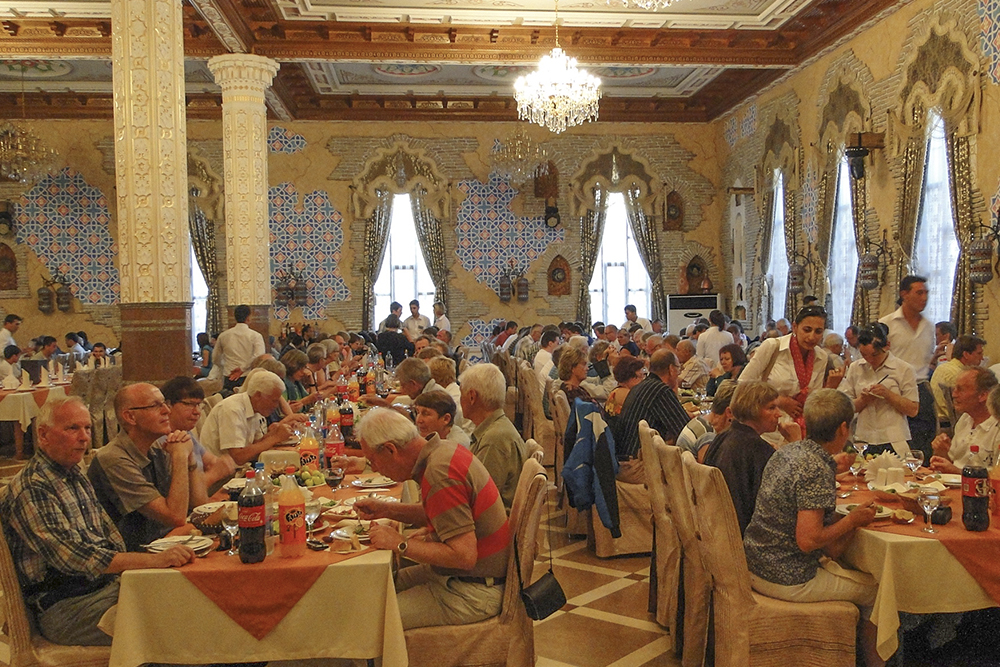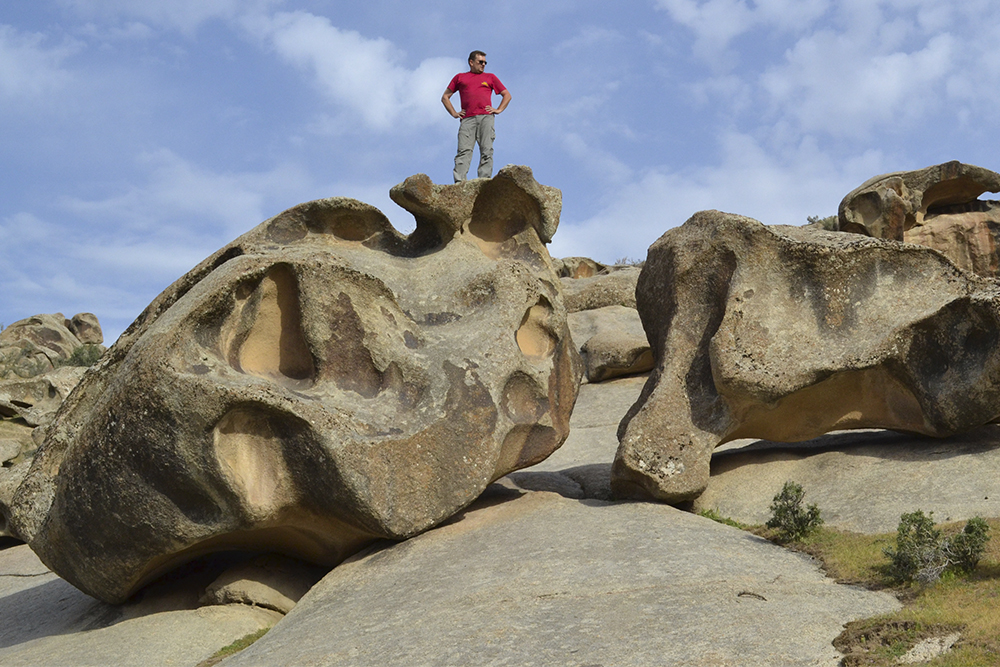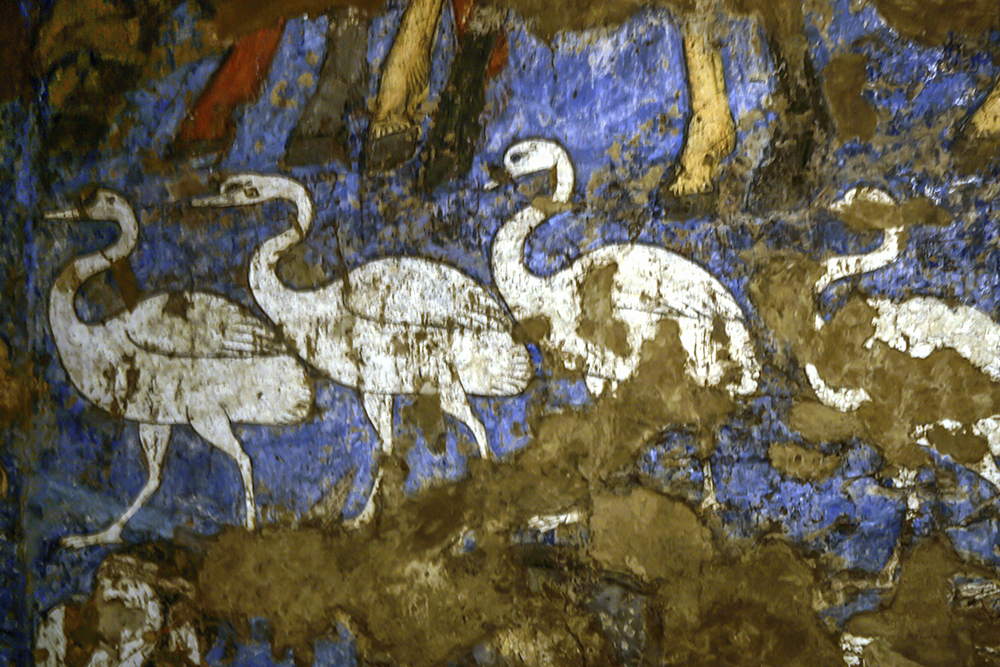The Shakhi-Zinda necropolis is situated in the northern part of Samarkand, on the hills of ancient Afrosiab. The historical core of this ensemble is the mausoleum of Kusam ibn Abbas, Muhammad’s cousin, who, according to Arab chronicles, arrived in Samarkand in 676. There he disseminated Islamic ideas and was killed by heathens during a prayer. Among people, however, Kusam is known under the name of Shakhi-Zinda (live king), as, according to a legend, he is still alive in the other world. In the following centuries his grave has been deeply revered by Muslims. In our time the flow of pilgrims does not lessen..
The oldest constructions of the ensemble, of which only foundations and tombs remain, are dated back to the 11th-12th centuries. Most of the constructions belong to the 14th-15th centuries, while those built in the 16th-20th centuries did not make any noticeable changes in the complex’s composition and appearance.
Shakhi-Zinda is the only archaeological and architectural monument in Samarkand which, including the cultural layers of Afrosiab, reflects the almost 25-century-old history of the city. The Shakhi-Zinda architectural ensemble is a unique museum of the 14th-15th-century glazed décor. There you can see specimens of glazed fretted terracotta, composite mosaics and large-size mosaics of glazed bricks. As for the fineness, beauty and variety of forms of the Shakhi-Zinda mausoleums, no other architectural monument in Samarkand can equal them.
The constructions just behind the entrance portal are the newest ones in the ensemble. All the constructions of the complex are divided into the lower, middle and upper groups. A stairway of 40 steps leads from the lower group to the middle one. All the groups are separated from each other by arched and domed constructions – chartaks.
The lower group of constructions features a two-domed mausoleum situated not far from the entrance. The middle group consists mostly of mausoleums built in Tamerlane’s time (14th-15th centuries), where his relatives and outstanding military and religious persons are buried. Among them are the mausoleums of Emir-Zade (1386) and Tuglu-Tekin, as well as those of Shadi-Mulk-aka (Tyrkan-aka, 1371-1372), Tamerlane’s niece, and Shirin-bika-aka (1385-1386), Tamerlane’s sister. Apart from the mausoleums that have been preserved to our days, the middle group also contains ruins of constructions that have not survived. Next to the Shirin-bika-aka mausoleum is an octagonal mausoleum of the first half of the 15th century. The construction has through arches on all the eight sides and differs from the other buildings. The mausoleum is decorated with mosaics of glazed bricks and, probably, once had a dome on a tall cylindrical drum.
The Kusam ibn Abbas complex, the core of the whole Shakhi-Zinda ensemble, consists of several buildings, the oldest of which are the Kusam ibn Abbas mausoleum and a 16th-century mosque. A wooden door with the date of 1404-1405 inscribed on it, decorated with fretwork and once inlaid with ivory, leads to the complex.
The upper group of buildings includes three mausoleums facing each other and forming a shady and charming little court. Their decorative designs seem to compete with one another to be called the most beautiful. The northern side of the court is bordered by the Khoja-Ahmad mausoleum built at the pre-Timurid time, probably, in the 1340s. The eastern and western sides are composed of a nameless mausoleum referred to 1360-1361 and the Tuman-aka mausoleum dated back to the early 15th century.
A mysterious stairway consisting of 40 steps leads to the entrance to the Shakhi-Zinda complex. According to a legend, the pilgrims visiting the place did not go right up to the sanctuary, but reached the top of the stairway only after 40 days of prayers. A pilgrim could overcome only one step a day, for a whole day staying on the step, whispering prayers from the Koran and contemplating upon their deeds and intentions. And the mystery of the stairway is that the number of the steps counted when going up and down is never the same for one person.
You don’t believe it? Count for yourself.
With its beauty and originality of forms and variety of decorative patterns, the Shakhi-Zinda necropolis occupies an honourable place among other oriental monuments.




